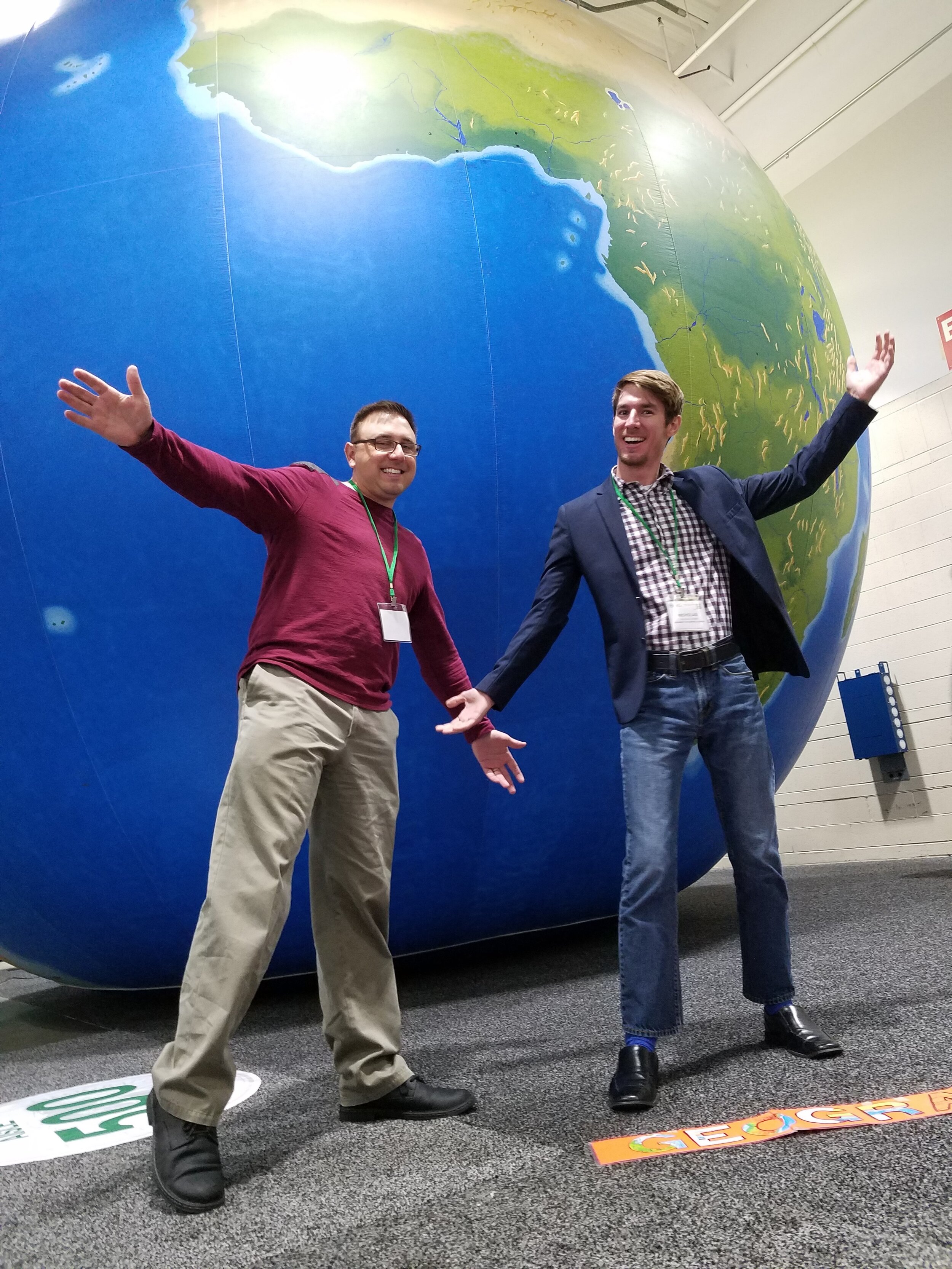Boston, Drones, Apps, and Our Giant Earth!
Reflections on the AAG Meeting 2017 in Boston by Nicholas Altizer, UCF Sociology graduate student.In early April, in an overcast and cold Boston several members from the Citizen Science GIS REU and Open Reef teams attended the American Association of Geographers annual meeting. The Hynes Convention Center was bustling with people when we arrived. Attendees walked quickly throughout the halls as they moved from one presentation to another. The excitement was palpable. I was fortunate enough to not only attend but also present at this spectacular event. The poster I presented, Using Drones to Replace Satellite Imagery: A Case Study from Belize, was a perfect fit for the GIS and Technology Session I presented in. This poster was meant to highlight the methodology employed by the Open Reef team in mapping all the islands of the Belize Barrier Reef using commercially available technology, namely drones or quadcopters. I was pleased to find a great many people approach me to discuss the use of drones in their work as well. In several instances, I was informed that the word “drone” in my title caught their eye and encouraged them to inquire. The range at which attendees discussed using drones in their work was great. Some examples included mapping canopies and using infrared sensors to monitor heat dissipation from homes. Several students from our 2016 REU program in Hopkins, Belize also had the opportunity to present work from their respective tracks. Hannah Bonestroo and Saraneh Fitzgerald discussed their work under the Marine Debris track while Amanda Ashby and Jake Wade discussed their work under the Flooding and Disaster Management track. It was truly a pleasure to see all four students engaging an interested audience in discussion not only about the work on the project but also their experiences.Lain Graham, part of the Citizen Science GIS REU and Open Reef teams, presented a poster during the conference as well. Lain’s poster, Citizen Science GIS in Practice: Community Based Research in Hopkins, Belize, was part of the Human Geography Session and captivated just as many attendees. The room was packed with inquisitive minds exploring new and continuing areas of research within the realm of human geography. The work in Hopkins, Belize was surely interesting as I was told questions about the experience were nearly nonstop.Overall, I would say the experience of attending the American Association of Geographers annual meeting was wonderful. I had the opportunity to not only engage researchers in their work but also present some of mine for the very first time! Seeing the wide range use of geographic applications has expanded my mind in terms of what is possible. The knowledge I gained from discussing the work being done on Open Reef, how drones can be used in other areas of research, and just hearing what others had to say about the field was truly enriching. To say I cannot wait for next year’s annual meeting or any other conference would be an understatement. Large conferences like the AAG annual meeting are great ways to connect with other students and become exposed to what is new in the world.
Several students from our 2016 REU program in Hopkins, Belize also had the opportunity to present work from their respective tracks. Hannah Bonestroo and Saraneh Fitzgerald discussed their work under the Marine Debris track while Amanda Ashby and Jake Wade discussed their work under the Flooding and Disaster Management track. It was truly a pleasure to see all four students engaging an interested audience in discussion not only about the work on the project but also their experiences.Lain Graham, part of the Citizen Science GIS REU and Open Reef teams, presented a poster during the conference as well. Lain’s poster, Citizen Science GIS in Practice: Community Based Research in Hopkins, Belize, was part of the Human Geography Session and captivated just as many attendees. The room was packed with inquisitive minds exploring new and continuing areas of research within the realm of human geography. The work in Hopkins, Belize was surely interesting as I was told questions about the experience were nearly nonstop.Overall, I would say the experience of attending the American Association of Geographers annual meeting was wonderful. I had the opportunity to not only engage researchers in their work but also present some of mine for the very first time! Seeing the wide range use of geographic applications has expanded my mind in terms of what is possible. The knowledge I gained from discussing the work being done on Open Reef, how drones can be used in other areas of research, and just hearing what others had to say about the field was truly enriching. To say I cannot wait for next year’s annual meeting or any other conference would be an understatement. Large conferences like the AAG annual meeting are great ways to connect with other students and become exposed to what is new in the world. You can learn more about the work we are doing through Open Reef at www.citizensciencegis.org/openreef and about the Citizen Science GIS REU at www.citizensciencegis.org/ucf-reu-site.
You can learn more about the work we are doing through Open Reef at www.citizensciencegis.org/openreef and about the Citizen Science GIS REU at www.citizensciencegis.org/ucf-reu-site.

